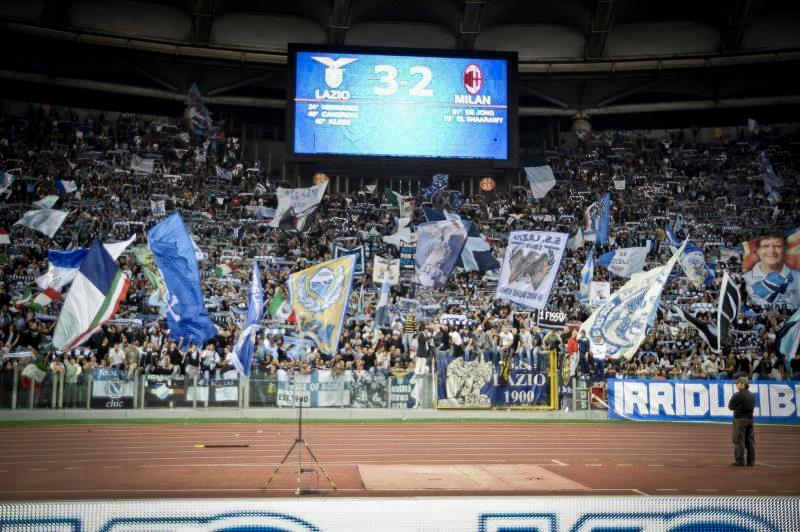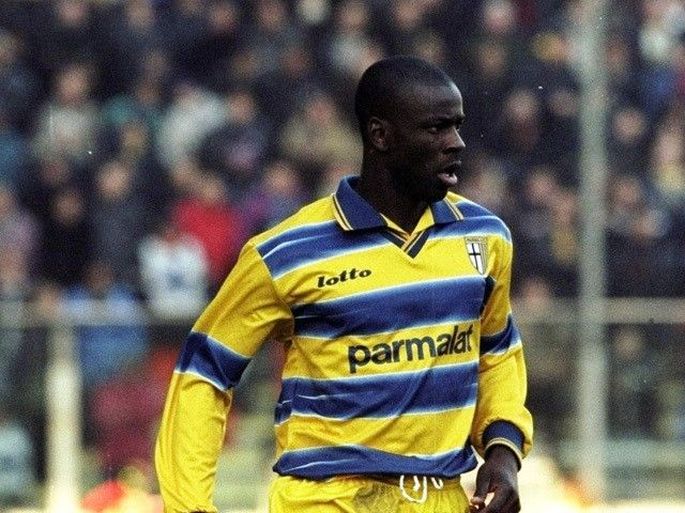It was an episode that sent shockwaves across the footballing world as Lazio’s ultras took transfer matters into their own hands.
On a warm June day back in 2001, Marco, Yuri, Diabolik and Toffolo of the Irriducibili set off on a six-hour trip. They were accompanied by a journalist, one of the few that Lazio’s ultras trusted. The person who they were set to meet had no idea they were coming.
Lilian Thuram was one of the best and most coveted defenders in the world. He was part of the golden French generation which won back-to-back international tournaments and was a mainstay in the Parma side that lit up Serie A in the 1990s.
Yet in the previous summer, star striker Hernan Crespo had left for Lazio and Gianluigi Buffon would soon exit for Juventus. The glory days at Parma were coming to an end, and Thuram was looking for a new adventure.
He was not short of options. Domestically Lazio and Juventus were interested, while the likes of Real Madrid and Manchester United had been tracking Thuram for years. However, Lazio emerged as the frontrunners. A fee of 50 billion lire was reportedly agreed. All that remained was for Thuram to give his seal of approval. It seemed like a no-brainer.
Compared to Parma, the Biancocelesti were a step above. Lazio had won Serie A in 2000 and narrowly missed out on retaining their crown the following year. Alessandro Nesta, Jaap Stam and Gaizka Mendieta were just some of the world class players who were plying their trade in the Champions League with the Italian side.
There was one issue for Thuram to get his head around, though: the Lazio fans. At the turn of the century, Serie A had some of the best players in the world with intriguing title races each year, but violence and racism from a minority of fans tarnished the spectacle.
Incidents were taking place across the country on a regular basis. Thuram himself was subjected to a volley of racist abuse during a game against Hellas Verona. After the match, the French international made a frank assessment, saying, “The people who shout this stuff haven’t the ability to look beyond their own little world.”
Reputations are often hard to shrug off. Lazio were now associated with these dark elements of ultra culture in Italy. During the 2000-01 season, five fines were handed down by UEFA to the club for offensive chants and racist abuse during European matches. Their final home game of the Serie A season was played 150 miles away from the Italian capital, at Fiorentina’s Artemio Franchi, as punishment for the racist abuse directed at Roma’s black players during the derby which included a banner reading: “Team of blacks, curva of Jews.”
It was this image of Lazio fans which drove the four Irriducibili leaders to travel up to Parma to reassure Thuram. As they arrived at Parma’s Collecchio training ground, Marco Di Vaio, Parma’s top scorer warmly embraced them. The forward had been born in Rome, had come through Lazio’s academy and had connections with the Irriducibili.
Parma always insisted as a club that they knew nothing about the meeting, but the reception that greeted the ultras and the ease with which they reached the dressing room to speak to Thuram suggests otherwise.
Thuram was handed official Irriducibili merchandise before he had time to speak and straight away Marco and his co-leaders began to put forward their case. The boos which came from the stands were reserved only for opposition players, they claimed, while emphasis was put on the good relations they had with a black player in the Lazio academy at the time.
It appeared as if the meeting had been a success. After half an hour of discussion, Thuram posed for photos and the two parties went their separate ways. In the aftermath, quotes were attributed to Thuram where he stated the discussions had been “positive” and made him understand a lot of things. As they began the long journey home, the Irriducibili leaders must have been pleased with their day’s work.
The Irriducibili were for a long time, the leaders of Lazio’s Curva Nord
Four days later, Juventus had signed Thuram. “It was an easy choice,” the French defender insisted during his unveiling. Lazio were left stunned.
In the weeks which followed the transfer, rumours spread of the true nature of the meeting. Instead of persuading Thuram to move, some suggested Marco and co had threatened him of the abuse he would receive should he move to the Italian capital. The notion of fans telling a player whether he would or would not be welcomed at their club because of the colour of his skin is a disturbing thought.
Lazio president Sergio Cragnotti was sure of why Thuram had turned down the move. “Thuram has turned us down because of racism in the stands,” he claimed. “A small part of our fan base [have] tarnished Lazio’s image around the world.”
An interview aired in 2002 during a BBC programme on ultras across the world shed further light. Thuram was adamant. “It’s incredible. You go to Lazio and you hear all these fans making all these noises. How could I go and play for Lazio knowing what they are like? It would be impossible.”
We may never know what really happened at Parma’s training ground on 5 June 2001. But the symbolic nature of the meeting is easier to understand.
Ultra culture is something that many outside of Italy struggle to comprehend, yet even those accustomed to this side of Italian football were shocked by the Thuram incident. How fans could organise a meeting with a world star and act on behalf of the club, something which perhaps scared Thuram more than anything, appeared to be a mystery.
However, the Irriducibili held incredible power and sway. At the time, they owned their own radio station and ran 14 shops across Rome, selling their own branded goods, which sold more than the official club merchandise. Leaders such as Marco were also in constant communication with those high up at Lazio, discussing things such as pre-match choreography with the vice-president.
With this, and the Irriducibili seeing themselves as the moral guardians of the club, the meeting seems more comprehensible, even if still bizarre. Looking back now, it epitomised the nature of ultra power at the time and marked a change in Lazio’s recent history.
As money was starting to dominate the game, it was in a way refreshing for fans to still have a real say, even if the message behind their power was not agreeable. Now, particularly with the elite clubs being big international brands, such a meeting between a prospective player and fans seems unimaginable.
After the Thuram debacle, Lazio as a club strove to distance itself from the Irriducibili. It started with Cragnotti’s remarks and has reached a head with the continued protests from fans against current president Claudio Lotito. Although the Irriducibili ran the official club shop until recent years, the friction at Lazio has been a long time coming.
For Thuram, the move to Juventus was an undoubted success, although one tarnished by his sudden departure following the club’s relegation to Serie B in 2006. But he will never forget the day he saw, first-hand, the power of the ultras in Italy, when he met the Irriducibili.
Words by Richard Hinman @RichardHinman
‘Richard has been an avid follower of Italian football since the turn of the century and in particular Roma’s dramatic final day Scudetto triumph. A Yorkshire man with Calabrian roots, he is passionate about writing on all things calcio, from its historic players to current issues.’

